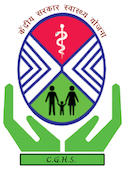Correct Diagnosis in Ayurveda for Migraine Relief
For many migraine patients, the quest for an effective and lasting remedy is more than just about pain reduction. Ayurveda for Migraine Relief is about the search for a renewed quality of life. In the pursuit of holistic health practices and the avoidance of dependence on painkillers, Ayurveda emerges as a profound system. Ayurveda not only provides medicinal solutions but also places paramount importance on the diagnosis process. By following Ayurvedic principles for the correct diagnosis of migraine, individuals can access personalized treatment plans. This helps to eradicate the root cause of their pain, rather than offer a temporary respite from symptoms.
Understanding Migraine in Ayurveda
Migraine, known as ‘Ardhavbhedak’ in ancient Ayurvedic texts. It associates with the imbalances of the three fundamental energies, or ‘doshas‘—Vata, Pitta, and Kapha. From an Ayurvedic lens, the condition arises when there is an aggravated state of Pitta in the body, influencing the Rakta and Mamsa dhatus, or the blood and muscle tissues.
The Symptomatology
The symptoms of migraines, according to Ayurveda, come under ‘Shiro Roga’ (head disorders). These can range from intense, throbbing pains predominantly on one side of the head. Accompanied by nausea, vomiting, and photophobia, are visual disturbances, known as ‘Avarana’.
Differentiating Migraine
Ayurveda teaches us that not all headaches are equal; they are as varied as the constitutions of individuals. It is essential to differentiate migraines from other types of headaches, such as tension headaches and sinus headaches. The causes behind these are distinct imbalances that, consequently, respond better to different treatments. Ayurveda for Migraine Relief is based on these concepts only.
Diagnosis Methods in Ayurveda
The art of Ayurvedic diagnosis is multi-faceted and encompasses a comprehensive approach to understanding the individual’s unique constitution, ‘prakriti’, and their current imbalances, or ‘vikriti’.
Nadi Pariksha
One of the primary methods of diagnosis is Nadi Pariksha. This is a technique where the Ayurvedic practitioner assesses the pulse. It is not just for the physical rate and rhythm but also to understand subtle energy imbalances.
Darshanam
Darshanam, or observation, involves the physician’s keen eye to detect physical signs and symptoms. These may include a person’s gait, facial expressions, skin complexion, and tongue coating. Each of these provide insights into the inner workings of the body. These points help in understanding the reasons behind the problem. Because all the doshas are sets of Gunas, nothing more than that. And Ayurveda for migraine relief works on the concept of the doshas only.
Prashna
Interrogation during a consultation is another form of diagnosis in Ayurveda. By understanding the patient’s medical history, lifestyle, and habitual patterns, the practitioner can piece together a comprehensive understanding of the patient’s imbalances. In the case of headache or migraine treatment, the main issue is finding out the root cause of the problem. The medical questions, like the location of the headache (which part), the time (when does it ache more), and the associated symptoms (hyperacidity, constipation, blurred vision), help in diagnosing the disease correctly. And this is the right diagnosis, which helps in developing a correct treatment approach for Ayurveda for migraine relief.
Treatment Approaches in Ayurveda
Once the diagnosis is complete, an Ayurvedic treatment regimen for migraines may include a combination of techniques aimed at restoring harmony within the doshas and rejuvenating the body’s tissues.
Ayurveda for Migraine Relief: Herbal Remedies and Supplements
Ayurvedic formulas for migraines often consist of herbal concoctions like Shatawari, Jatamansi, and Ashwagandha to calm the nervous system and diminish the intensity and frequency of migraines. These are often administered with oils or ghees to facilitate their absorption and action. There are some other combinations of herbs and minerals too, like Shirahshooladi vajr rasa, Pathyadi Kashayam, etc.
These remedies are selected according to doshas and the cause of the migraine. No one should take these medicines without the consultation of a proper physician.
Lifestyle Modifications and Dietary Recommendations
The importance of lifestyle and diet in Ayurveda cannot be overstated. Tailoring these aspects to the individual’s constitution can lead to significant improvements in overall health, which in turn, reduces the chance of migraine episodes.
Stress Management Techniques
Given that stress is a common trigger for migraines, Ayurveda offers a range of practices, including yoga, meditation, and pranayama, to manage and prevent stress-related imbalances.
Preventing Misdiagnosis
To harness the full potential of Ayurveda for migraine treatment, it is critical to prevent misdiagnosis. This can be achieved by being aware of common pitfalls in diagnosing headaches and seeking consultation with trained and experienced Ayurvedic practitioners.
Common Misdiagnoses
One of the common misdiagnoses related to migraines is mistaking them for tension headaches, leading to ineffective treatments. Also, the symptoms of migraines can sometimes be attributed to other disorders like glaucoma or a brain tumor, necessitating careful diagnosis.
Consulting an Ayurvedic Expert
The practice of Ayurveda requires a practitioner who can interpret the nuances of the patient’s condition through an Ayurvedic lens. By avoiding self-diagnosis and seeking expert advice, individuals can unlock the true benefits of Ayurveda for migraine relief.
Conclusion
In the often overwhelming landscape of healthcare choices, the precision and personalized approach of Ayurvedic diagnosis offer a beacon of hope for those seeking to overcome migraines. By understanding and engaging with the diagnosis methods and treatment approaches in Ayurveda, individuals can move beyond mere symptom management towards a life of genuine wellness and vitality. It’s a journey that begins with the recognition that a correct diagnosis is not just the first step—it’s the pivot upon which the path to healing turns.














